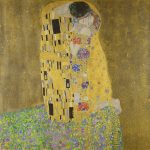Art history often focuses on the works of famous artists, but what about the people who supported them behind the scenes? In the case of Paul Klee, one of the most influential artists of the 20th century, his wife, Lily Stumpf, played a crucial role in shaping both his personal life and his artistic career. Their marriage was a remarkable partnership, built on mutual respect, encouragement, and love. Together, they formed an unbreakable bond that helped Klee navigate the challenges of the art world and develop his unique style.
How Paul Klee and Lily Stumpf First Met
Paul Klee met Lily Stumpf in 1899 in Munich, a city known for its vibrant art scene. At the time, Klee was a young artist trying to find his place in the world, while Lily was a talented pianist with a promising future. Their connection was immediate, as both were drawn to each other’s creativity and passion for the arts. Klee admired Lily’s musical talents, and Lily found herself fascinated by Klee’s paintings and sketches.
They soon discovered that they had much more in common than just their love for the arts. Both shared a deep interest in literature, philosophy, and nature. These shared passions helped form the foundation of their relationship. They enjoyed long conversations about art, music, and the world around them, which allowed them to understand each other on a profound level.
Their relationship blossomed, and despite the challenges that came with Klee’s unpredictable career path, Lily stood by his side. She believed in his potential, even when he faced rejections from galleries and struggled to sell his work. Her unwavering support helped Klee continue pursuing his artistic dreams.
A Marriage of Art and Music
Paul Klee and Lily Stumpf married in 1906, marking the beginning of a lifelong partnership. Their marriage was more than just a union of two people; it was a marriage of art and music. Klee often credited Lily’s musical background as a significant influence on his work. He saw music as an art form closely related to painting, and his compositions frequently reflected this belief.
In fact, Klee’s art often drew upon musical concepts such as rhythm, harmony, and improvisation. He once said, “A line is a dot that went for a walk,” illustrating how he viewed art as a fluid and dynamic process, much like music. This connection between art and music was a recurring theme throughout Klee’s career, and Lily’s influence was evident in many of his works.
While Klee developed his artistic voice, Lily continued to pursue her career as a pianist. She performed in concerts and taught music, contributing to the household income, especially during the early years of their marriage. Klee’s financial struggles made it difficult for them to live comfortably, but Lily never complained. She understood the sacrifices required for Klee to grow as an artist and was willing to endure the hardships for the sake of his success.
Lily Stumpf: The Unsung Hero
Though Paul Klee’s name is well-known in the art world, Lily Stumpf’s contributions to his career are often overlooked. She wasn’t just his wife; she was his confidante, advisor, and muse. Klee relied on Lily’s opinion when it came to his work, trusting her judgment as a musician and artistically-minded individual.
Lily provided Klee with the emotional support he needed during the toughest times. When Klee felt disillusioned with his career, Lily encouraged him to keep going. She believed in his talent, even when others didn’t. Their relationship was built on mutual respect, and Klee often acknowledged the role Lily played in his success.
Lily also managed their household, allowing Klee to focus on his art. She took care of their son, Felix, and handled the day-to-day responsibilities, which gave Klee the freedom to create. Without Lily’s support, Klee might not have had the time or energy to produce the groundbreaking work that he did.
The Role of World War I in Their Lives
The outbreak of World War I in 1914 brought significant changes to Paul Klee and Lily Stumpf’s lives. Klee was drafted into the German army, and the war disrupted their peaceful life. However, even during this difficult period, their bond remained strong.
Klee was stationed far from the front lines, which allowed him to continue working on his art. Despite the chaos of war, Klee managed to find inspiration in his surroundings, producing several important works during this time. His letters to Lily during the war reveal his deep love for her and his longing to return to their peaceful life together.
Lily, for her part, continued to support Klee from afar. She managed their household while he was away and ensured that their son Felix was well taken care of. Their correspondence during the war showcases the strength of their relationship, as they continued to encourage each other despite the hardships they faced.
The Bauhaus Years: A New Chapter
In 1920, Paul Klee was invited to join the Bauhaus, an innovative art school that sought to combine art, craft, and technology. This marked a turning point in Klee’s career, as he became one of the most prominent members of the Bauhaus faculty. His teaching methods and artistic theories influenced generations of artists, and his work during this period remains some of his most celebrated.
Lily supported Klee’s decision to join the Bauhaus, even though it meant uprooting their family and moving to Weimar. She understood the importance of this opportunity for Klee’s career and willingly adapted to their new life. During the Bauhaus years, Klee and Lily’s partnership remained as strong as ever, with Lily continuing to provide the emotional and practical support Klee needed to thrive.
Their home in Weimar became a hub for intellectual and artistic exchange, with Bauhaus colleagues frequently visiting. Lily, though often in the background, was an integral part of these gatherings. Her calm presence and thoughtful insights helped foster an environment where creativity could flourish. Klee’s success at the Bauhaus was undoubtedly influenced by Lily’s steadfast support.
Overcoming Tragedy Together
In 1933, the rise of the National Socialist regime forced Paul Klee to flee Germany. His work, labeled as “degenerate art,” was no longer welcome in the country. The Klees moved to Switzerland, where they faced a new set of challenges. Klee’s health began to deteriorate, and the couple struggled to adjust to their new life in exile.
Once again, Lily remained by Klee’s side, offering him strength and comfort during these difficult times. Despite the political and personal hardships, Klee continued to create art, producing some of his most emotionally charged works during this period. His later works often reflected his declining health and the uncertainty of the world around him, but they also demonstrated his resilience as an artist.
Lily’s role during this time cannot be understated. She provided the stability Klee needed to keep working, even as his health worsened. She also handled the logistical challenges of their exile, managing their finances and dealing with the bureaucracy of their new life in Switzerland.
Paul Klee’s Final Years
Paul Klee passed away in 1940, leaving behind a legacy that would influence generations of artists. His unique style, which blended elements of surrealism, cubism, and expressionism, continues to inspire contemporary art today. But behind every great artist, there is often someone who played a significant role in their journey. For Klee, that person was Lily Stumpf.
Lily continued to honor Klee’s legacy after his death, ensuring that his work received the recognition it deserved. She worked tirelessly to organize exhibitions of his art and preserve his memory for future generations. Thanks to her efforts, Klee’s work has remained an enduring part of art history.
A Legacy of Love and Creativity
The story of Paul Klee and Lily Stumpf is not just a tale of artistic genius; it’s a love story that transcended the challenges of time, war, and illness. Their partnership was built on mutual respect, creativity, and unwavering support. Klee may have been the artist, but Lily was the quiet force behind his success.
Their marriage serves as a reminder that behind every great artist, there is often someone who believes in them, even when the world does not. Lily’s love and dedication allowed Paul Klee to reach his full potential as an artist, and their story remains one of the most inspiring partnerships in art history.
As Klee himself once said, “Art does not reproduce the visible; it makes visible.” In the case of Paul and Lily, their love made visible the true power of partnership and the profound impact one person can have on another’s life and work.




